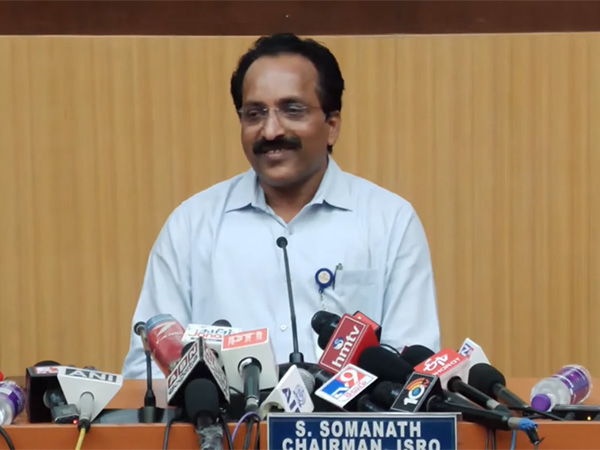
Nellore: Indian Space Research Organisation (ISRO) chief S Somanath said that the Earth Observation Satellite-8 (EOS-8) was on Friday launched successfully on Friday was a success with the satellite placed in the precise orbit.
The ISRO chief expressed happiness on the successful launch from the Satish Dhawan Space Centre in Sriharikota and said that the next program is to manufacture and launch it for commercial purposes.
Addressing a joint press conference in Sriharikota, the ISRO chief said, "It was a very successful mission. As of today, with the data available, the mission is almost a 100 per cent success with the satellite being placed in the correct orbit and all separation process happening nominally. We are very happy about completion of the development programme of SSLV with this third development flight."
Recalling earlier missions, Somanath said that during the first launch which was a "near miss," the orbit was a slightly shorter one leading to the re-entry of the satellite back into earth at a later some time though it was placed in the orbit.
"We made corrections and the second flight went very well and after that we have done this third development flight," he said.
SSLV-D3 was the third and final developmental flight of SSLV. The first flight of the SSLV on August 7, 2022 ended in failure but its second flight on February 10, 2023 was a success.
Somanath said that now the focus will be to manufacture and launch this rocket for commercial purposes and for this the two routes are realizing and launching.
Explaining the process further, the ISRO chief said, "There are satellites which will be launch-weighting, which will be realized by NSIL in the interim period, where they will fund and realize the rockets. Whichever is required for commercial purpose, they will fund this route to realize and supervise from industries and launch.
"After that, there is a technology transfer process which in space has started and the technology transfer process will find out which industry consortium will take it up and they will work with ISRO for next two years to understand the technology and realize two weightings as a process of technology transfer," he said.
Somanath said that they will be launched commercially by NSIL and after that launch, industry will be free to produce any number of hours they desire in their own facilities. "That's the plan and whatever they cannot do, ISRO will do, otherwise everything is supposed to be done by ISRO," he added.
NewSpace India Limited is a Public Sector Undertaking of the Government of India and under Department of Space.
He said that it is the first time a technology transfer of a satellite roger vehicle will happen in India.
"We have designed it in a simple manner which is industry friendly for production and at low cost and very short assembly time, integration time, testing time, and has an architecture which is more failure proof and they use commercial operational components," he said.
The ISRO chief further highlighted that there are many features that has been built into the rocket to make it very industry friendly. "We are hoping that there is a huge amount of interest and they will come out with a good proposal finally and the whole activity of industry, technology transfer activities being initiated through in space after they finalize the industry consortium is where we work with the industry for," he added.
As per ISRO, the six-and-a-half-hour countdown leading to the launch commenced at 2.47 am and was launched at 9.17 am on Friday.
This was the third and final developmental flight of the SSLV-D3/EOS-08 mission.
The spacecraft is designed for a mission duration of one year.
The primary objectives of the EOS-08 mission include designing and developing a microsatellite, creating payload instruments compatible with the microsatellite bus, and incorporating new technologies required for future operational satellites, an ISRO release said.